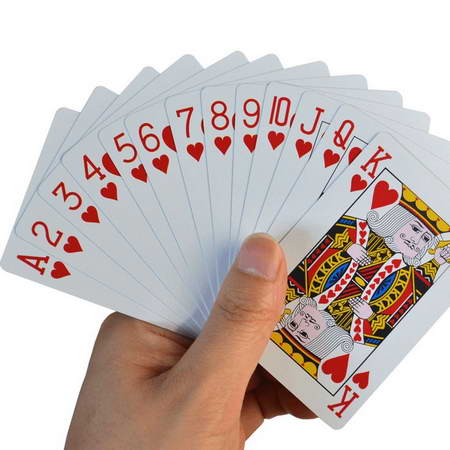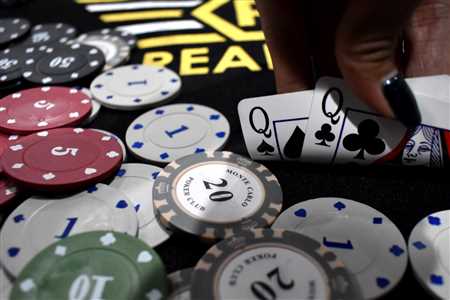

In the realm of card games, one particular variant stands out for its rich history and unique gameplay mechanics. This intriguing pastime has captivated players across cultures, offering an engaging blend of chance and skill. It invites enthusiasts to gather around the table, fostering a sense of camaraderie and competition.
For newcomers and seasoned players alike, understanding the essential components of this entertaining pursuit is paramount. From the initial setup to the intricacies of gameplay, every detail contributes to the overall experience. Players must navigate through various phases, making strategic decisions that can lead to thrilling victories or unexpected defeats.
The journey doesn’t end with mastering the basics. As participants delve deeper into the game, they uncover invaluable insights and clever tactics that can elevate their proficiency. Embracing a thoughtful approach, coupled with effective execution, opens doors to a realm of possibilities, making every session an exhilarating adventure.
The fascinating journey of this card game traces back to a rich tapestry of cultural influences and historical contexts. Evolving from various traditional games, it has captured the essence of social interaction and strategic thinking among players. Over time, it has become a favorite pastime, reflecting the vibrant spirit of its roots.
This game has been shaped by both local customs and international trends, resulting in a unique format that resonates with enthusiasts. The early iterations often featured distinct elements specific to regional practices and gatherings, which contributed to its widespread popularity. As it traveled across borders, it assimilated features from different styles, enriching its gameplay.
The blend of chance and skill inherent in this card game reflects the societal values of the environments it emerged from. Historical records indicate its presence in various forms, highlighting the integral role it has played in entertainment and camaraderie. The game’s adaptability has allowed it to thrive, ensuring its place in the modern recreational landscape.
The fascinating journey of this card game traces back through the mists of time, showcasing a rich tapestry woven with culture and tradition. It has undergone significant transformations influenced by various regions and communities, allowing it to flourish into the version enjoyed today.
Historically, this pastime is believed to have emerged in the ancient realms, where it was played in various forms. Its complexity and intrigue have contributed to its enduring popularity across generations. Key milestones in its development may include:
As societies evolved, so did the game itself. Its gameplay mechanics were influenced by:
This enduring game continues to captivate enthusiasts, as it melds history with contemporary enjoyment, reflecting the dynamic essence of human interaction through competition and camaraderie.
The history of card games in the subcontinent dates back centuries, with deep roots in cultural practices and traditions. The evolution of these games reflects the rich tapestry of Indian society, influenced by various dynasties and communities over time.
Games similar to what we recognize today emerged due to:
Among the early references, historical texts note that card games were played by royals and commoners alike, often associated with strategy, chance, and entertainment.
Over time, these games transcended social classes and geographical boundaries, fostering a sense of community and shared enjoyment among diverse populations. This rich heritage has paved the way for the contemporary versions of these beloved games.
The evolution of traditional card games has paved the way for a diverse range of contemporary variations, each introducing unique elements and gaming experiences. As players seek new challenges and styles, the classic formats adapt and blend, allowing for innovative gameplay while retaining the essence of the original experience.
Players often find that the latest versions incorporate strategic advancements and creative rulesets, enhancing engagement and competition. From Texas Hold’em to Omaha, these adaptations have attracted a global audience, fueled by both casual enthusiasts and serious competitors alike.
This transformation emphasizes the importance of adaptability within the gaming community. With a constant influx of fresh ideas and formats, these modern adaptations ensure that participants remain captivated, fostering a vibrant culture around card gaming that spans various demographics.
Understanding the unique features of each variant is essential for success. By familiarizing oneself with the nuances, players can leverage these innovations to gain an edge over opponents, making informed decisions that align with their chosen style.
The ongoing interaction between traditional roots and modern influences exemplifies the dynamic nature of card entertainment. As players embrace these changes, they contribute to the rich tapestry of gaming history, ensuring its continued growth and evolution for future generations.
The game carries deep-rooted importance within various communities, transcending mere entertainment and offering a glimpse into the social fabric of society. It functions as a medium for bonding, allowing players to connect, share stories, and strengthen relationships through shared experiences and friendly competition.
In many regions, this pastime is not just a recreational activity, but a tradition passed down through generations. Celebrations and festivities often incorporate this game, enhancing its role as a unifying force. It fosters a sense of belonging and can often be found accompanying significant life events, thus intertwining with cultural practices and rituals.
Moreover, the strategic nature of the game encourages critical thinking and adaptability, traits that are highly valued in many cultures. The blend of chance and skill reflects life’s unpredictable nature, drawing parallels to broader societal themes. Through this lens, the game becomes a metaphor for resilience and teamwork, highlighting the importance of collaboration and strategy in achieving shared goals.
This card game has left a notable mark on various other card-playing formats, showcasing its versatility and adaptability. Its mechanics and strategies have inspired numerous versions across different cultures, enhancing the global card-playing experience.
Overall, the impact of this card game on others is significant, inspiring innovations and fostering community through shared enjoyment and competitive spirit.
Card games often serve as a powerful tool for fostering connections and enhancing the camaraderie among participants. In various social settings, these games can break the ice and offer a relaxed atmosphere where friends and newcomers alike can engage and bond over friendly competition.
This particular game has become a staple in gatherings, from casual meetups to festive celebrations. Its inherent blend of strategy, chance, and interaction provides an engaging experience that captivates players, inviting laughter and spirited discussions that help strengthen relationships.
The game encourages inclusivity, allowing participants of varied skill levels to join in the fun. As players share their experiences and develop tactics, they simultaneously create memorable moments that elevate the social experience. The dynamic nature of the game often leads to playful banter, making it an ideal choice for fostering a lively environment.
Ultimately, such activities not only entertain but also nurture a sense of community, providing individuals with an opportunity to unwind and enjoy the company of others. Engaging in these pastimes can leave a lasting impression, turning simple gatherings into cherished memories.
Creating an enjoyable experience for participants involves careful preparation and organization. This section describes the important aspects that contribute to an engaging gathering for this popular card activity.
First, a suitable location is essential. Choose a comfortable space with enough seating for all players, as well as a flat surface for the playing area. Ensure that lighting is adequate to allow everyone to see their cards and chips without strain.
Next, gather the necessary materials. A standard deck of cards is required, along with poker chips or an equivalent substitute for betting. Make sure that the number of chips is appropriate for your group size, allowing for a variety of betting options throughout the game.
Once the setting is ready, establish the number of participants. This format typically accommodates a small to medium-sized group, usually between three to ten players. If there are more participants, consider whether additional tables are needed, or if it might be better to split into smaller games.
Lastly, before beginning, engage everyone in a brief discussion about the unique features of this game format. Ensure that all participants understand the concepts and variances that may exist, fostering a welcoming environment for both novices and experienced players alike.
For a thrilling experience in this engaging card game, certain essentials are required to set the stage. Gathering the right items lays the foundation for an enjoyable session with friends or family.
Deck of Cards: A standard deck of 52 playing cards is crucial. Ensure the cards are in good condition for optimal shuffling and dealing.
Chips or Tokens: Having a set of chips or tokens to represent currency is essential for placing bets and keeping track of scores. These can be purchased or created easily at home.
Seating Arrangement: A round table or a comfortable gathering space is ideal for fostering interaction among players. Ensure enough seating for everyone participating.
Notepad and Pen: For keeping track of scores and notes, a notepad and pen can come in handy. This helps to enhance the organization and flow of the gameplay.
By preparing these items in advance, participants can dive right into the excitement and competition that this card game offers.